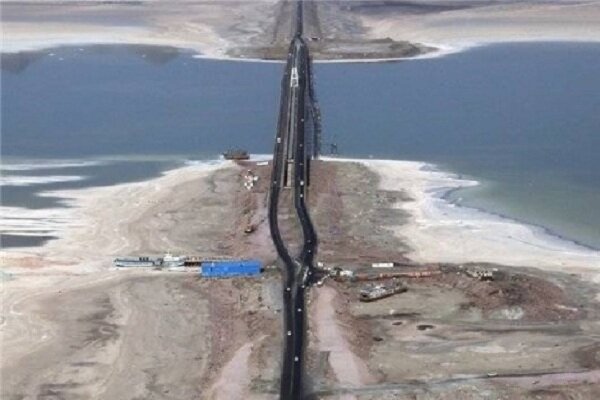Special budget to expedite Lake Urmia restoration

TEHRAN - Some 5 trillion rials (about $12.5 million) has been earmarked for speeding up the implementation of the Lake Urmia revival plan.
The final stages of the project to transfer water to Lake Urmia are underway, and the allocation of the budget to the project has accelerated the operations, IRNA quoted Mohammad-Sadeq Motamedian, the secretary of the national working group for the restoration of Lake Urmia, as saying.
In line with the project to transfer water from the Kanisib Dam to Lake Urmia, a tunnel as long as 36 kilometers has been dug, he said, adding that fortunately, the project is almost in the final stages and about 60 to 70 meters of the tunnel has remained.
The plan to restore the lake will finally achieve the ecological balance of the lake, which is 6 billion cubic meters of water, he noted.
The development of greenhouse cultivation and the mechanization of modern irrigation systems are among our priorities, which should be accelerated by the ministries of agriculture and energy, Motamedian stressed.
Restoration efforts
Lake Urmia started to dry up in the 2000s, and although it revived at some point over the past few years, it is in serious danger these days.
Lake Urmia, located in northwest Iran, is the largest lake in West Asia and the sixth-largest Salt Lake in the world with a water surface area of 5,000 to 6,000 square kilometers.
The lake is designated for the List of Wetlands of International Importance, Ramsar Site, as well as a UNESCO World Biosphere Reserve, which is a protected area with the aim of conserving nature and culture in the region and community development.
However, the water in the lake has been decreasing during the past years. The water surface area shrank by approximately 80 percent of its (once-large) original size at the end of the dry season in 2013 and by approximately 70 percent at the end of the rainy season of the same year.
Restoration measures caused the level of Lake Urmia to reach 1278 meters in 1995 and 1274 meters in 2005 and finally, it stood at 1270 meters in 2015.
Based on the studies and according to the statement of the Lake Urmia Restoration Program, 18 percent of the drying was due to climate change and 82 percent was due to the mismanagement of water resources in the catchment area, Somayeh Rafiei, a member of the Majlis (Iranian Parliament), has said.
The water level of Lake Urmia was supposed to reach 1274.1 by 2028.
Researchers have realized that the situation of Lake Urmia in the last 20 years is not fully related to a lack of rainfall, which shows that the share of human factors has been higher.
Paleontological studies conducted by two Iranian researchers at the University of Miami on Lake Urmia show that even when the rainfall was 180 mm, the lake did not dry up, and this shows that the lake’s condition in recent years has been affected by human factors.
The share of natural factors in the drying of Lake Urmia is 31 percent, which includes an 18 percent decrease in rainfall and a 1.5-degree increase in temperature in the last two decades compared to the long term, and the share of human factors is 69 percent, which includes agricultural development and construction of dams and extraction from groundwater sources.
The amount of water consumption in the Urmia catchment area for the agricultural sector is 4,699 million cubic meters and the consumption for drinking, health, and industry is 588 million cubic meters.
MG
